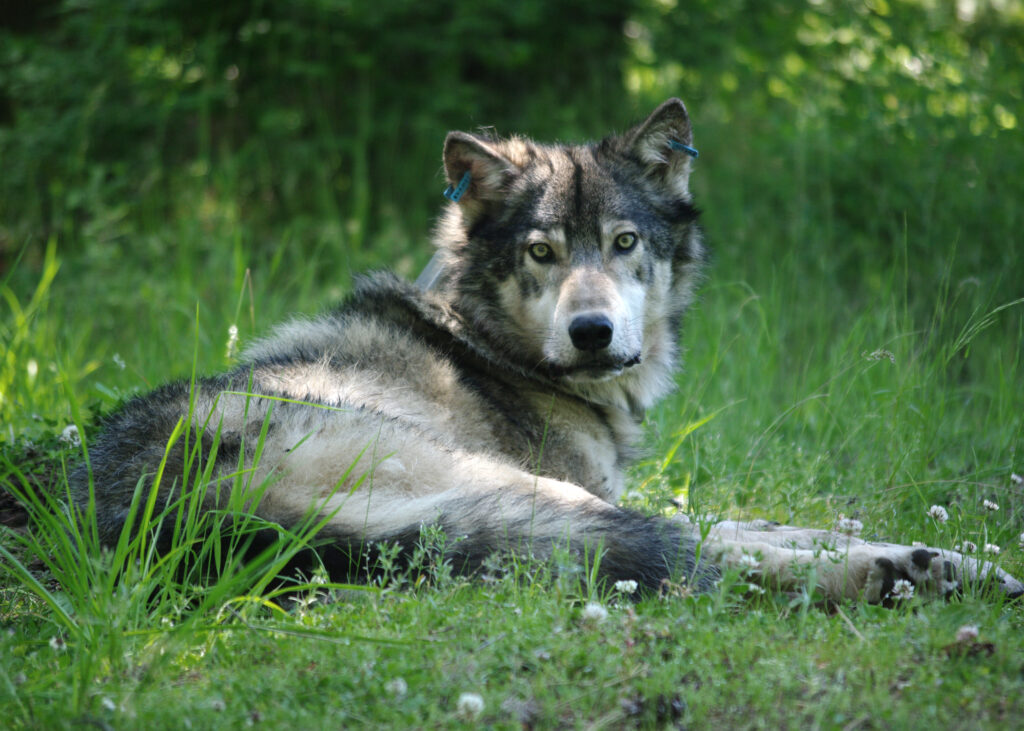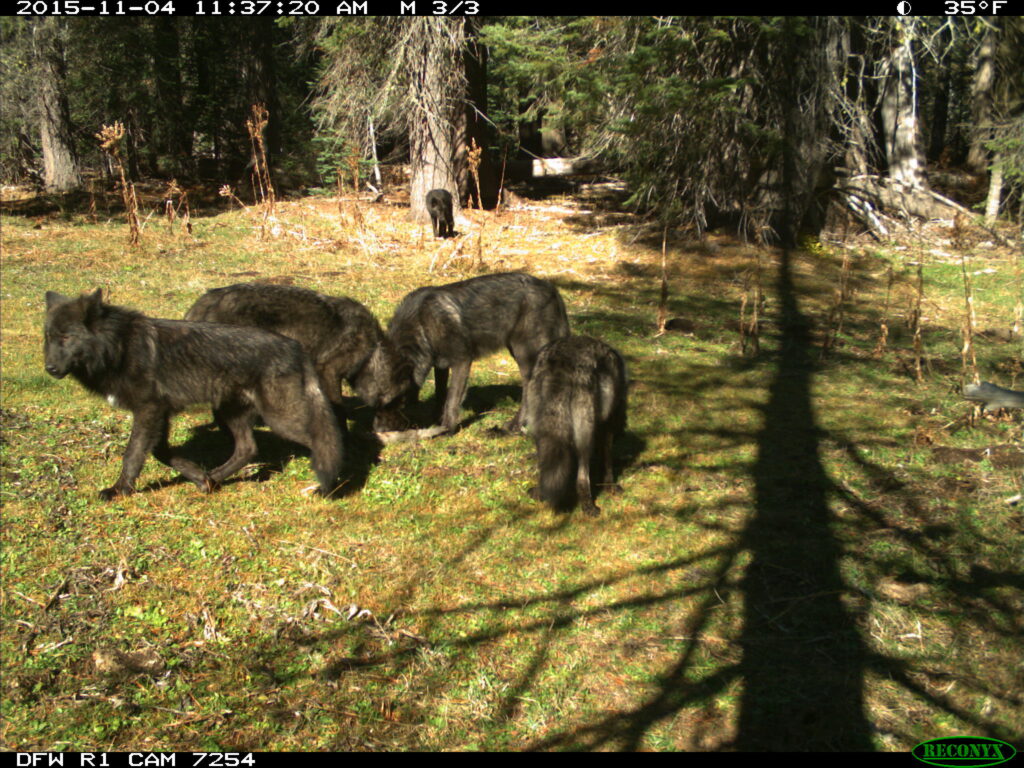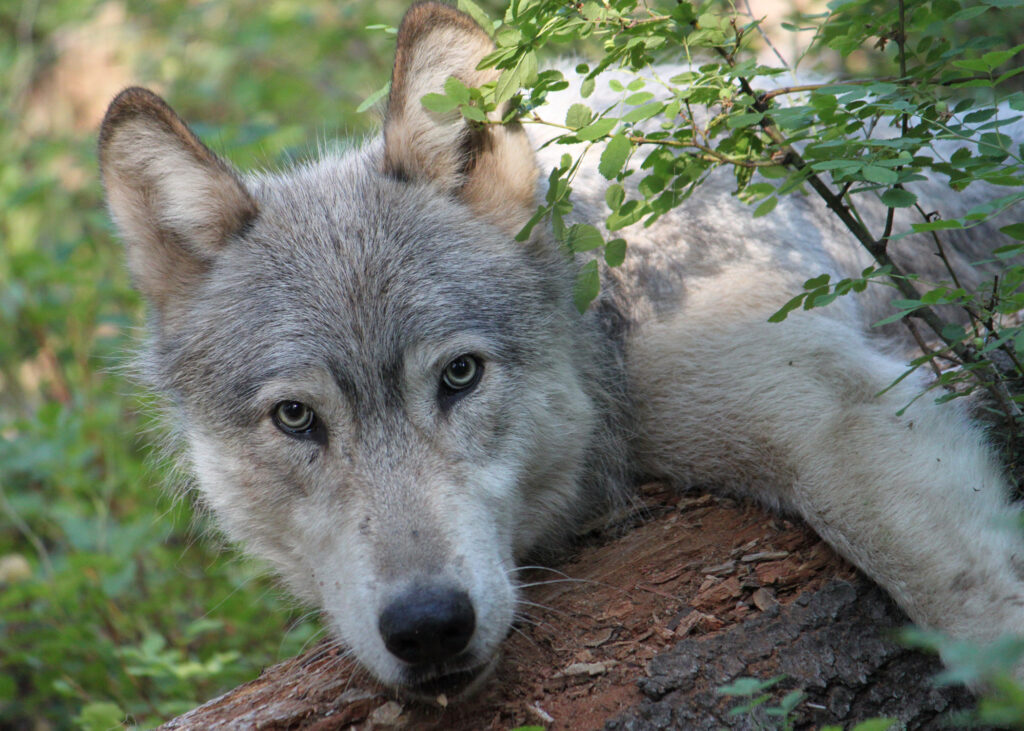
QUICK FACTS ABOUT GRAY WOLVES
Species: Gray Wolf (Canis lupus)
Diet: Carnivore
Size: 26-32 inches tall; 4.5-6.5 feet long
Weight: 55-130 lbs
Coloration: gray to black to white
Lifespan in the wild: 7-8 years
Why Wolves?
” Since then I have lived to see state after state extirpate its wolves. I have watched the face of many a newly wolfless mountain, and seen the south-facing slopes wrinkle with a maze of new deer trails. I have seen every edible bush and seedling browsed, first to anemic desuetude, and then to death. I have seen every edible tree defoliated to the height of a saddlehorn.”
Aldo Leopold, Thinking Like A Mountain
Few species arouse such varied and strong emotions like wolves. The extirpation of wolves from the U.S. in the 1800’s arose from centuries of hatred and distrust bred from myths, folklore, and misinformation. However, over the last several decades, growing appreciation for wolves and recognition of their vital ecological role created space for their recovery.
Now, for many people, wolves no longer represent a hated predator but rather an iconic species of the wild American West.
In light of the current proposal to delist wolves, it is important to revisit the important role wolves play both ecologically, and socially. Even now, researchers continually discover new cascading effects of wolves in our landscape.
Diet
As carnivores, wolves’ primary prey consists of ungulates, or hoofed mammals, such as deer or elk. Though wolves largely rely on large prey species, they have also been known to consume smaller mammals, such as beavers or rabbits, as well as scavenge upon already dead animals. During periods of abundant food, wolves can eat up to 30 lbs of meat a day. Fluctuating environmental conditions require wolves to adapt to sudden abundances of prey often followed by days of prey scarcity.
Range
At one point in time, wolves were common throughout the North American landscape. Due to a systematic extermination program of trapping, hunting and poisoning by humans, wolves came close to extinction. With the help of recovery efforts, wolf populations are beginning to rebound but are limited to Canada and portions of the U.S., including Alaska, California, Idaho, Montana, Michigan, Minnesota, Oregon, Washington, Wisconsin, and Wyoming.
Population
Currently, the U.S. is home to over 5,000 wolves in the lower 48 states and an estimated 7,000 to 11,200 wolves in Alaska. Globally, wolf populations are estimated to be 200,000 individuals spread across 57 countries. This is just a fraction of historical population estimates of 2 million wolves worldwide.
Reproduction
In a given year, the alpha male and female of a stable pack mate in January or February and produce four to seven pups. The alpha female gives birth at the end of April in a den. Pups are raised by the whole pack until they reach maturity at 10 months.
Behavior
Wolves are social predators, living in close-knit family units called packs. A wolf pack consists of an alpha male and female (also called the breeding pair) and their offspring. Alpha males and females are responsible for tracking and hunting prey, establishing territories, finding den sites, and reproducing. Subordinate wolves assist in rearing young pups and sometimes depart from the pack to establish new territories and form new packs.
The spread of wolves across a landscape primarily depends on territoriality. Territories are areas of habitat occupied and defended by a single wolf pack. These territories can vary in size depending on prey density and wolf population density but must be large enough for adult wolves to ensure the survival of their offspring. Territories have been documented as small as 50 square miles to as large as 1,000 square miles. Within these territories, wolves can travel as far as 30 miles a day.
Communication is an important component of wolves’ social structures. Wolves use a complex system ranging from barks and whines to growls and howls to communicate within and between packs. Researchers have recently found that howls are unique to individual wolves, allowing individual identification by wildlife managers and researchers.


